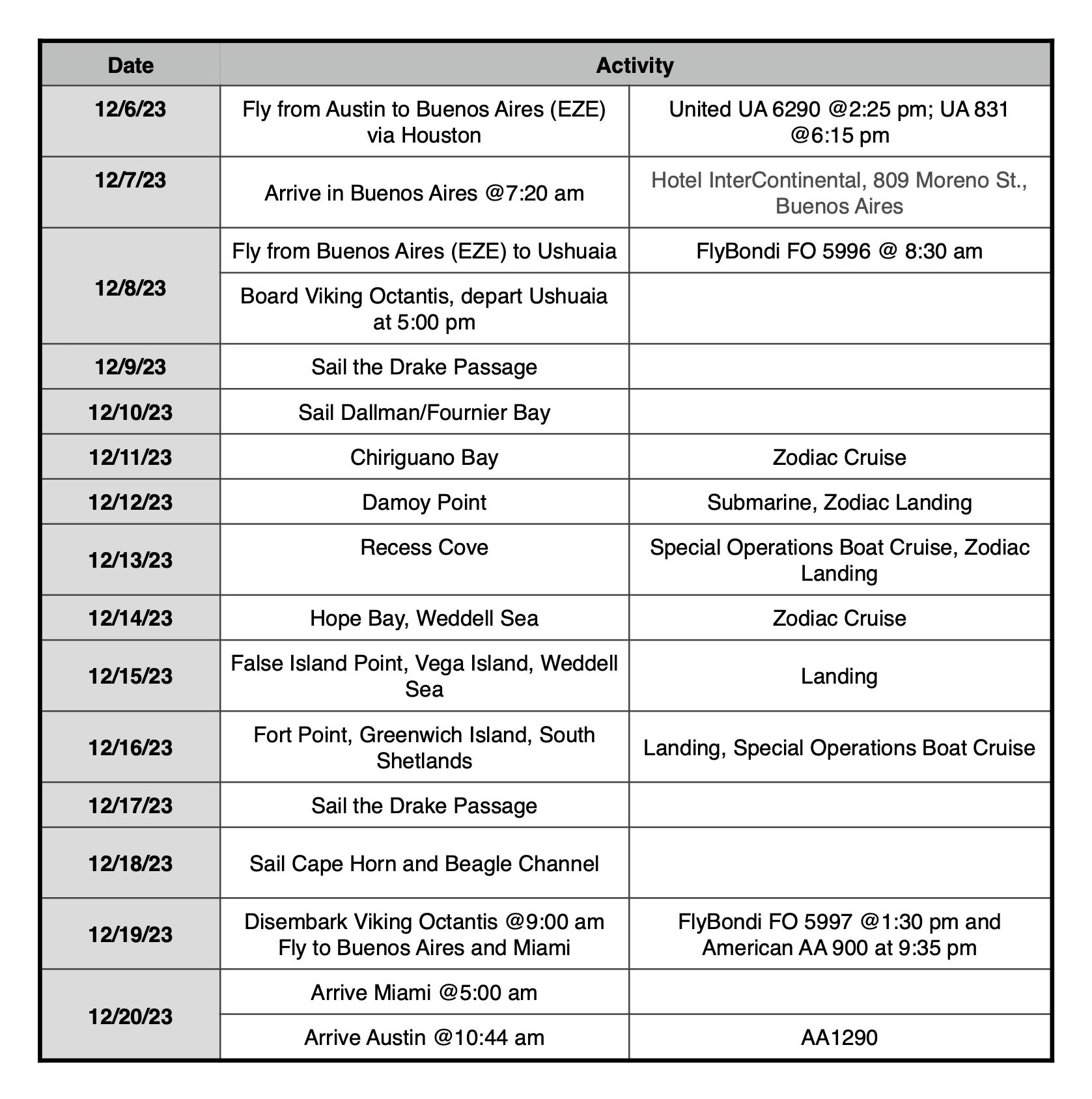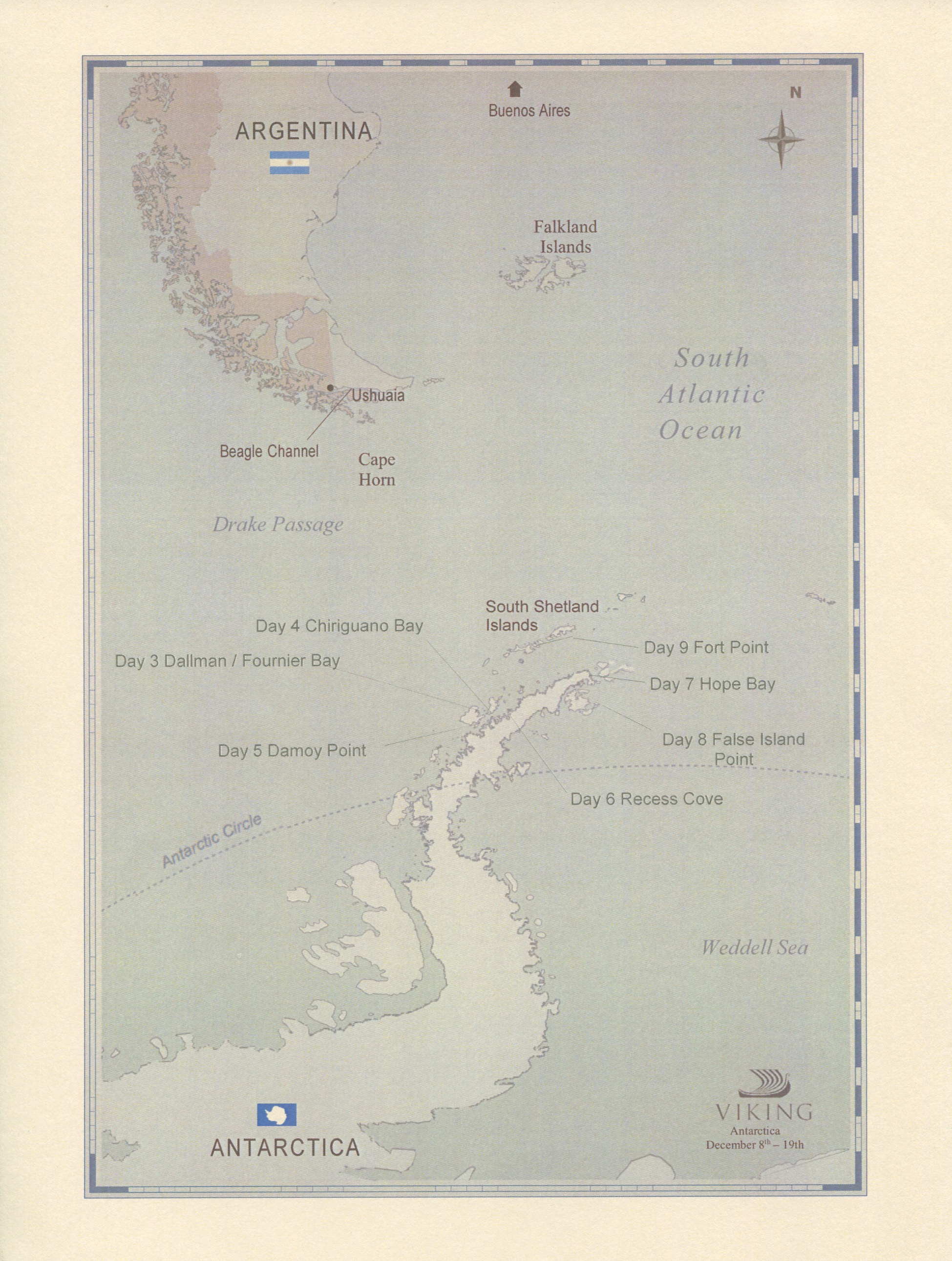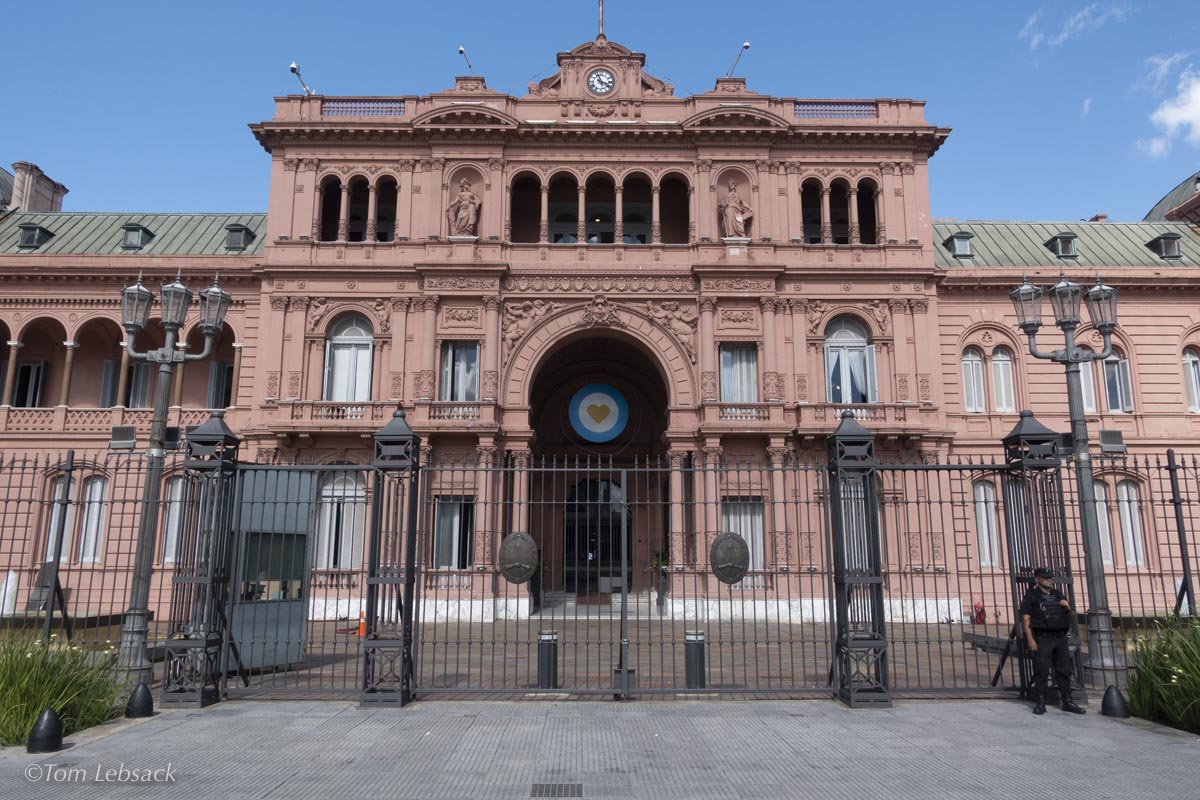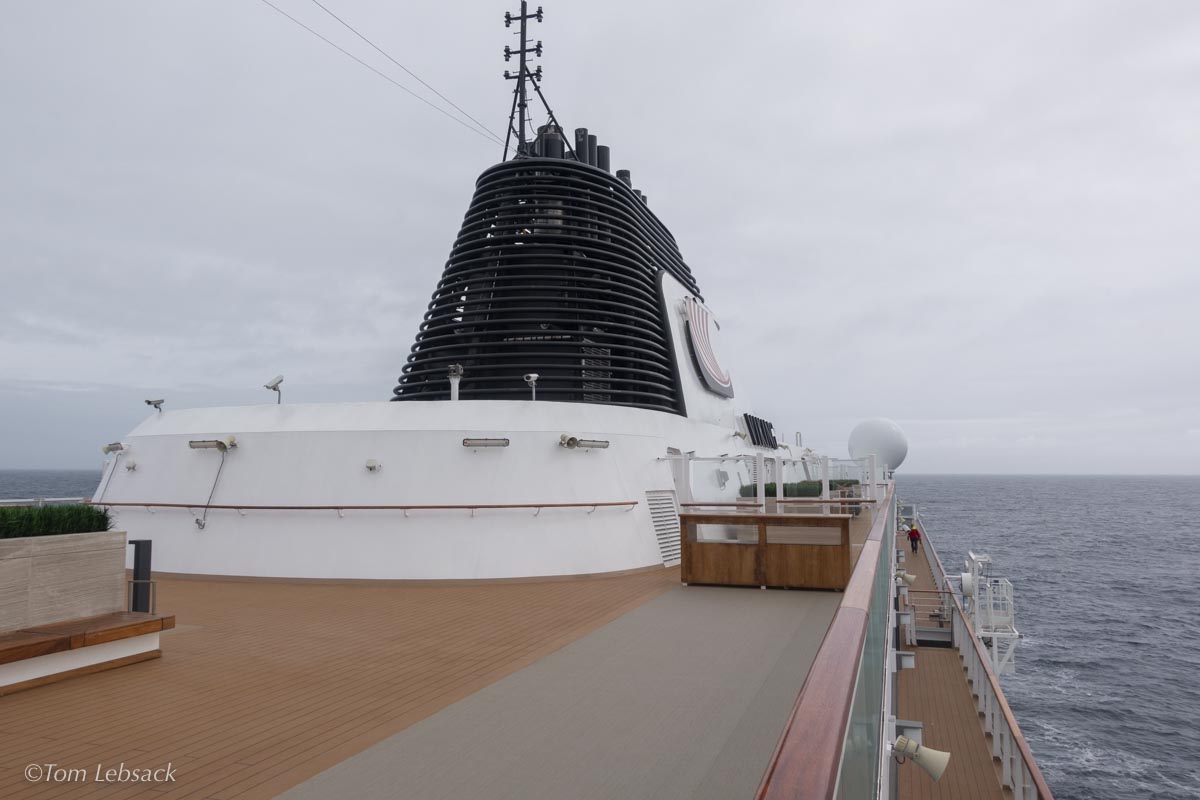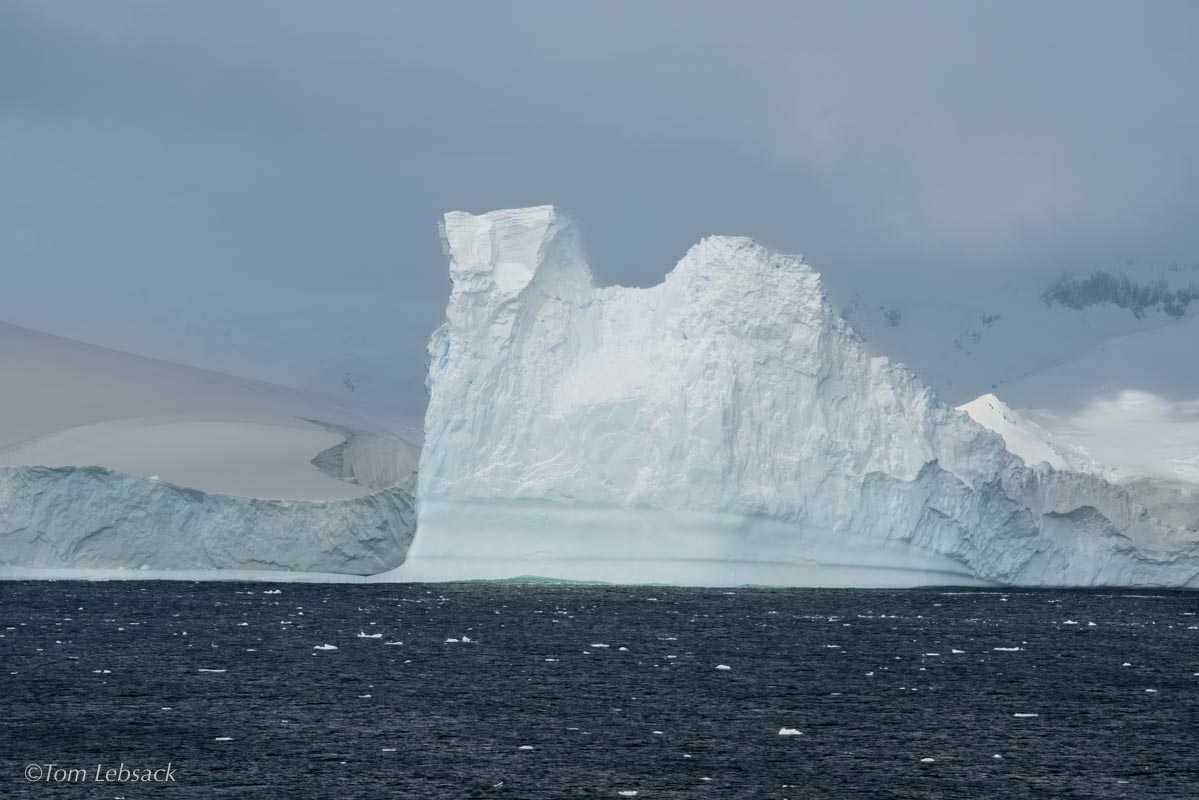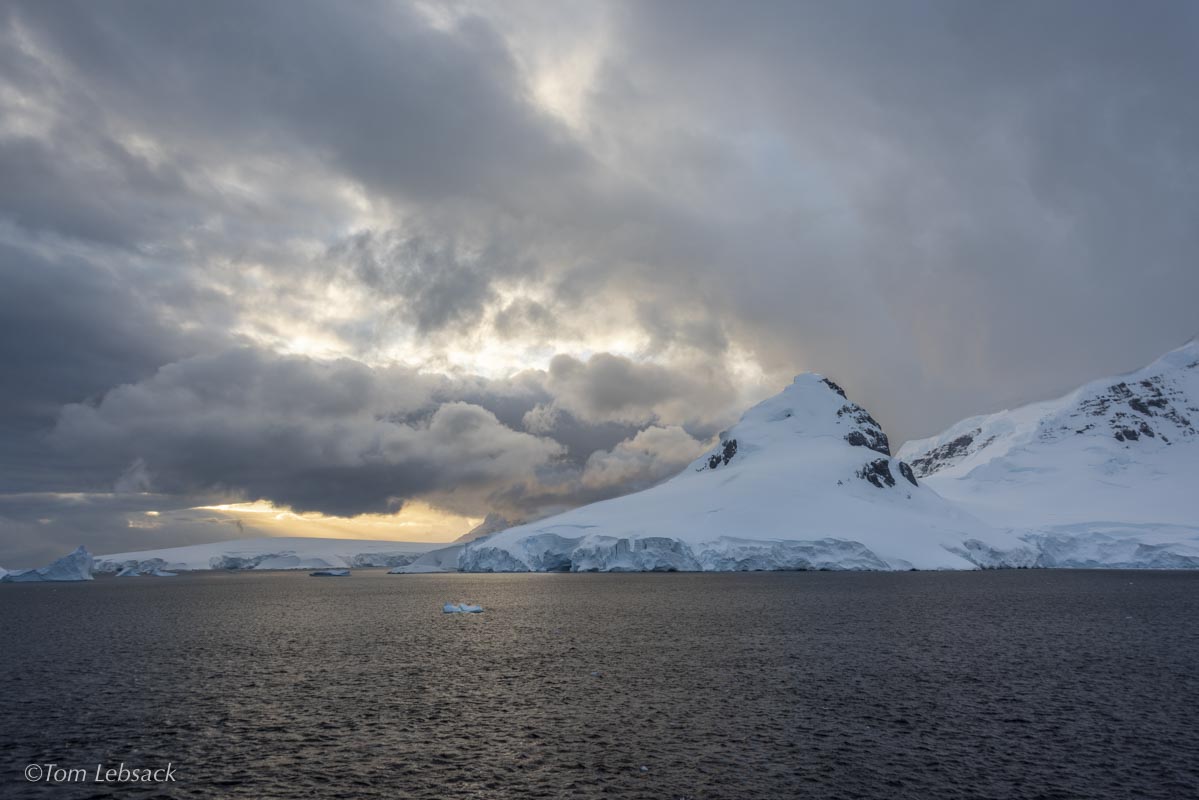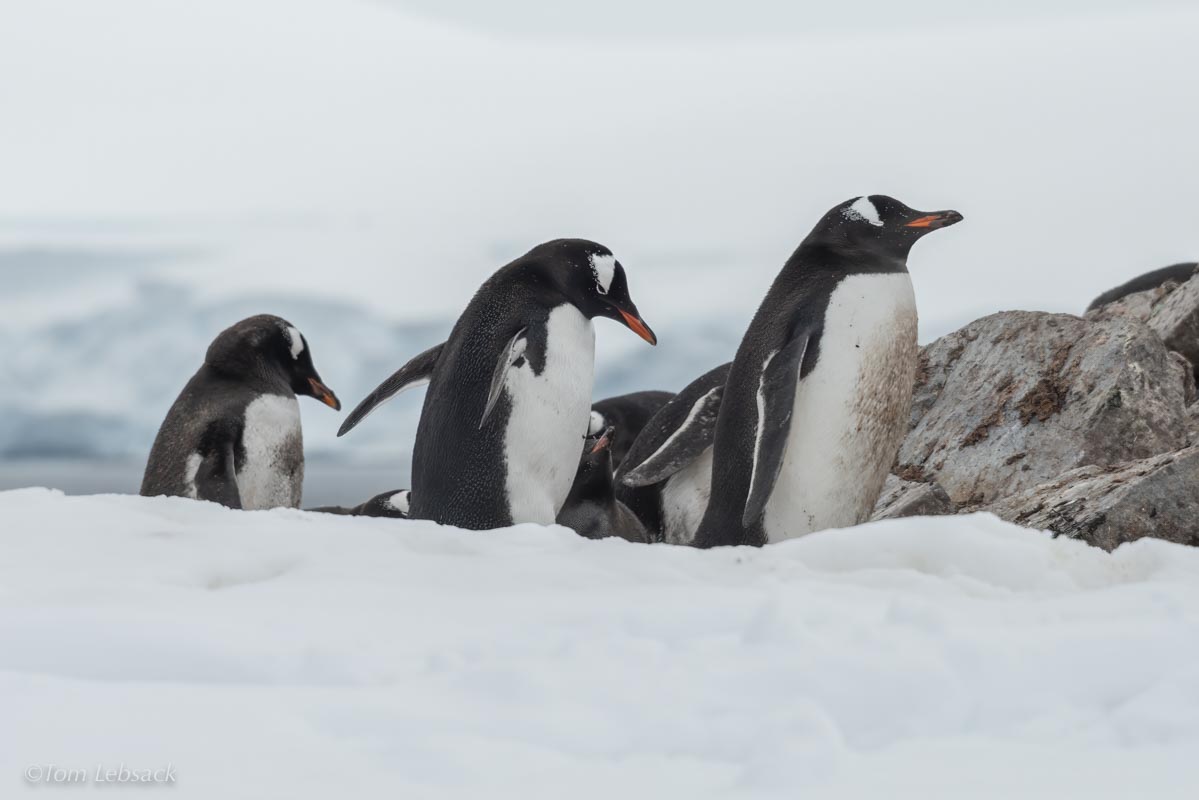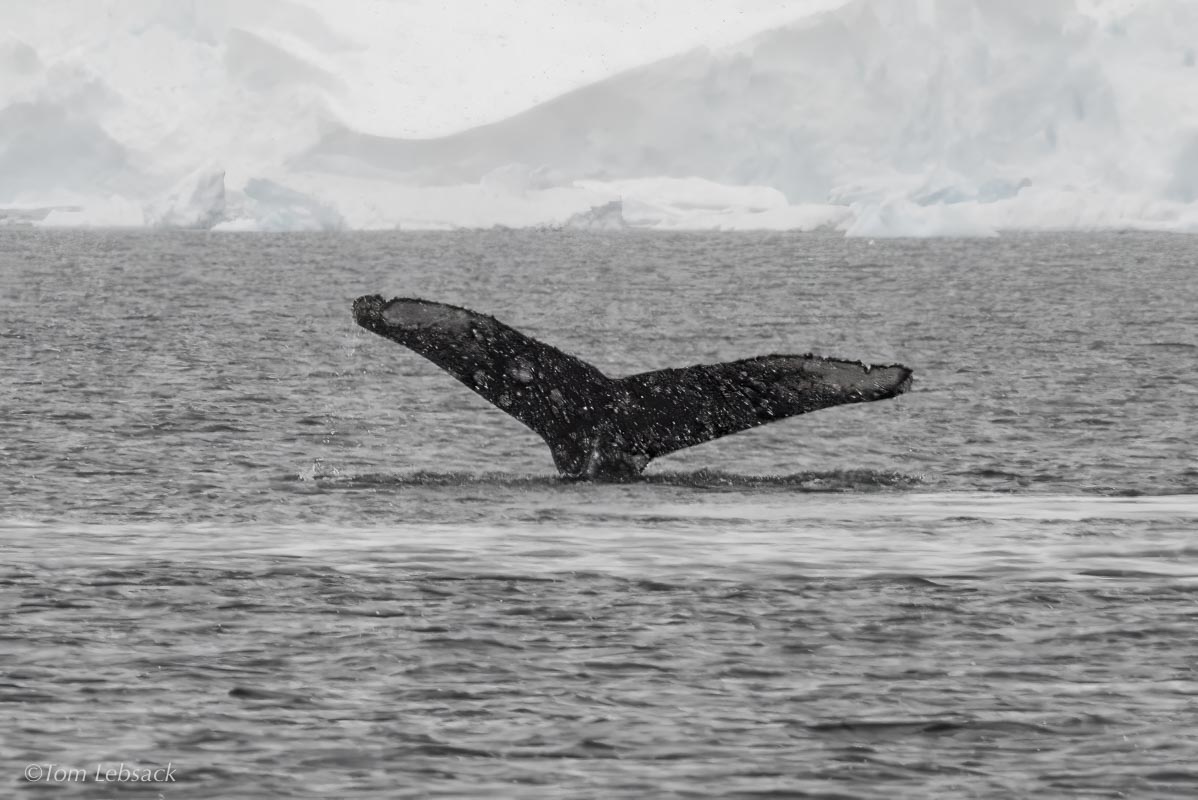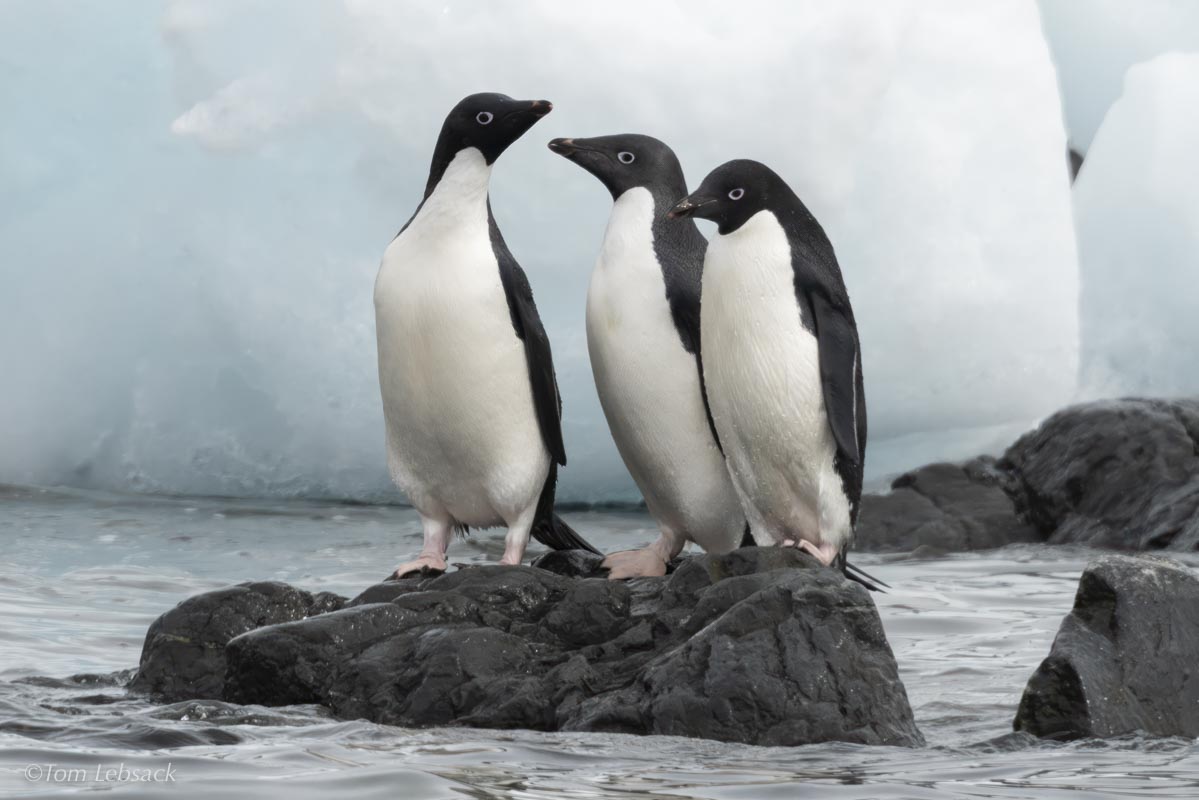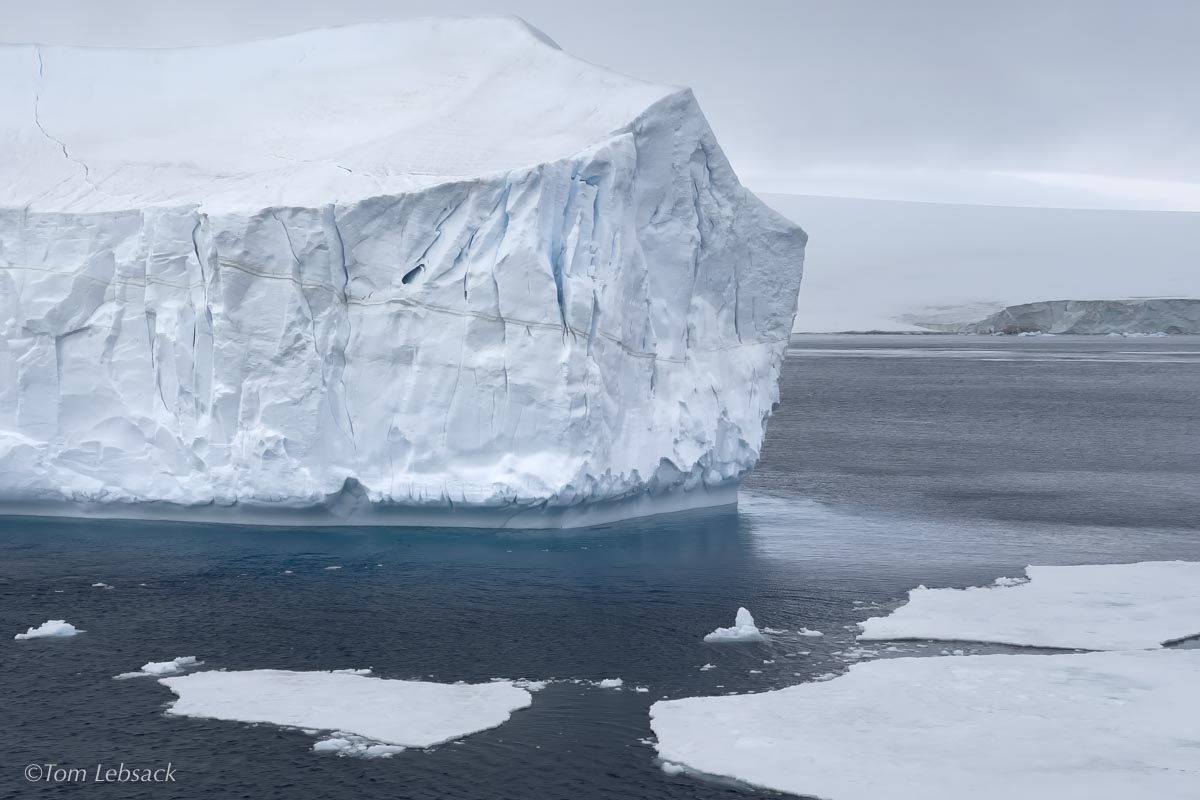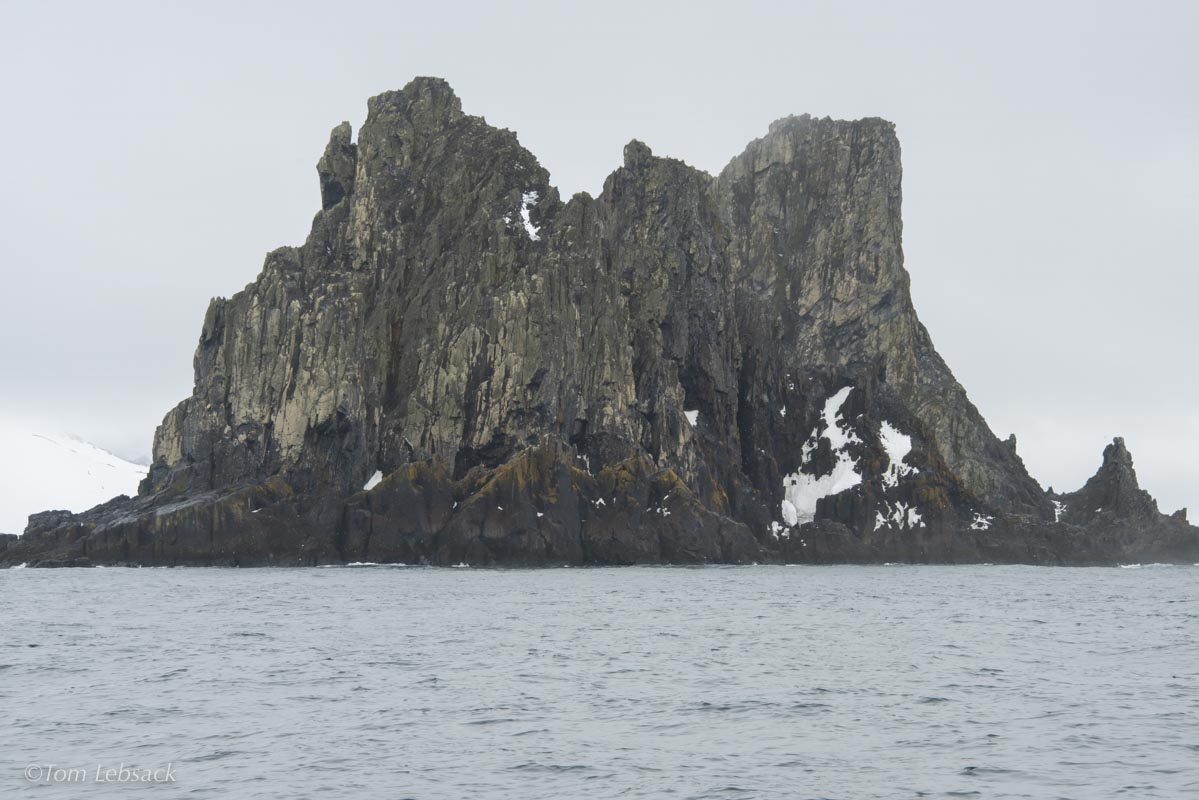Antarctica
Antarctica Expedition Cruise
December, 2023
In early December, 2023, we embarked on a trip to the Antarctica Peninsula. The trip, in the planning stages for two years, finally took place starting with a flight to Buenos Aires on December 6 and on to Ushuaia at the southernmost point of Argentina the next day. Tom’s cousin Bob Hettinger and his wife Wendy were on the trip, also.
The trip took 15 days altogether, with four days involved in getting to and from Ushuaia. We were aboard the ship Viking Octantis for 11 nights. The ship was new and in its second season in the Antarctic. It was purpose-built for polar expedition cruises.
Expedition cruises are different than normal cruises in that the purpose is to visit wilderness areas accompanied by guides from an expedition team. The ships are much smaller than a normal cruise ship and equipped with Zodiac inflateable rafts for shore landings. In Viking’s case, they also include kayaks, two submarines and two Special Operations boats.
Another difference is that there is a lot of flexibility in the itinerary and landing sites. Of the six sites listed initially planned, because of the ice and weather conditions, we only went to one of them. But all of the stops were educational and very enjoyable.
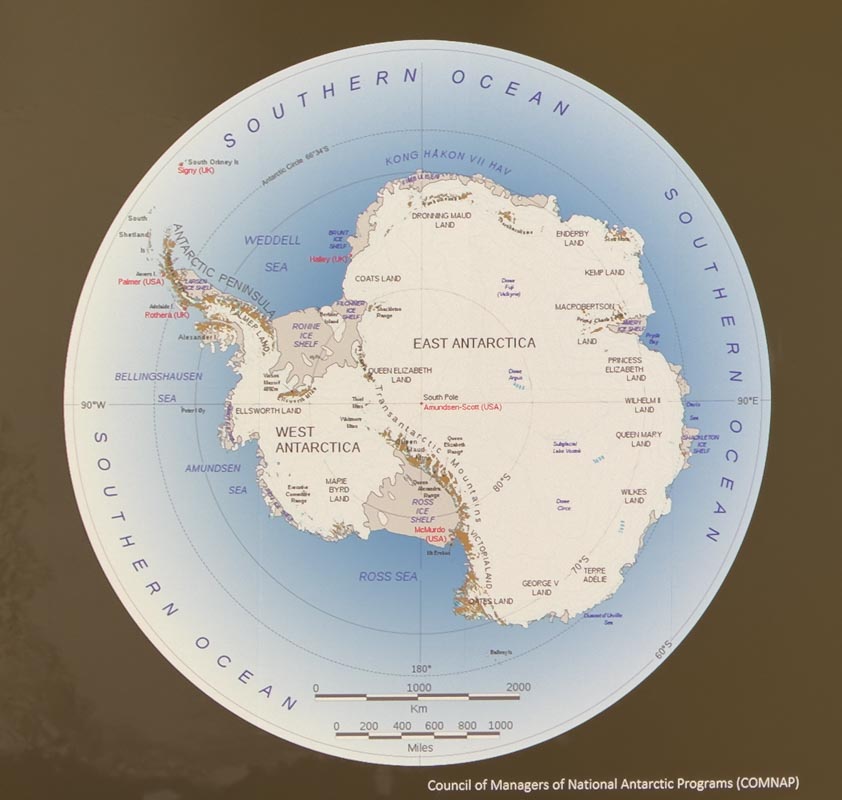
Antarctica is Earth's southernmost and least-populated continent. It is situated almost entirely south of the Antarctic Circle, surrounded by the Southern Ocean and it contains the geographic South Pole. It is the fifth-largest continent, being about 40% larger than Europe, and has an area of 5,500,000 sq mi. Almost all of the continent, 98%, is covered by the Antarctic ice sheet, which has an average thickness of 1.2 mi. About 70% of the world's freshwater reserves are frozen in the ice sheet.
Antarctica is the coldest, driest, and windiest continent, and it has the highest average elevation, 8000 ft. It is mainly a polar desert, with annual precipitation of about 8 inches along the coast and far less inland. It holds the record for the lowest measured temperature on Earth, −128.6 °F. The coastal regions can reach temperatures over 50 °F in the summer. Native species of animals include mites, nematodes, penguins, seals and microscopic water bears (tardigrades). Where vegetation occurs, it is mostly in the form of lichen or moss.
Ozone Hole
Ozone, a colorless gas that occurs naturally in the upper atmosphere, shields the Earth from harmful ultraviolet radiation from the Sun.
Each year for the past few decades during the Southern Hemisphere spring, chemical reactions involving chlorine and bromine cause ozone in the southern polar region to be destroyed rapidly. By the end of December it usually returns to more normal levels.
We were there when the hole was still pretty large. See below for the map of December 9, 2023. We used a lot of sun block.

© Tom Lebsack 2024
Banner photo ttaken at Hope Bay near the tip of the Antarctic Peninsula
